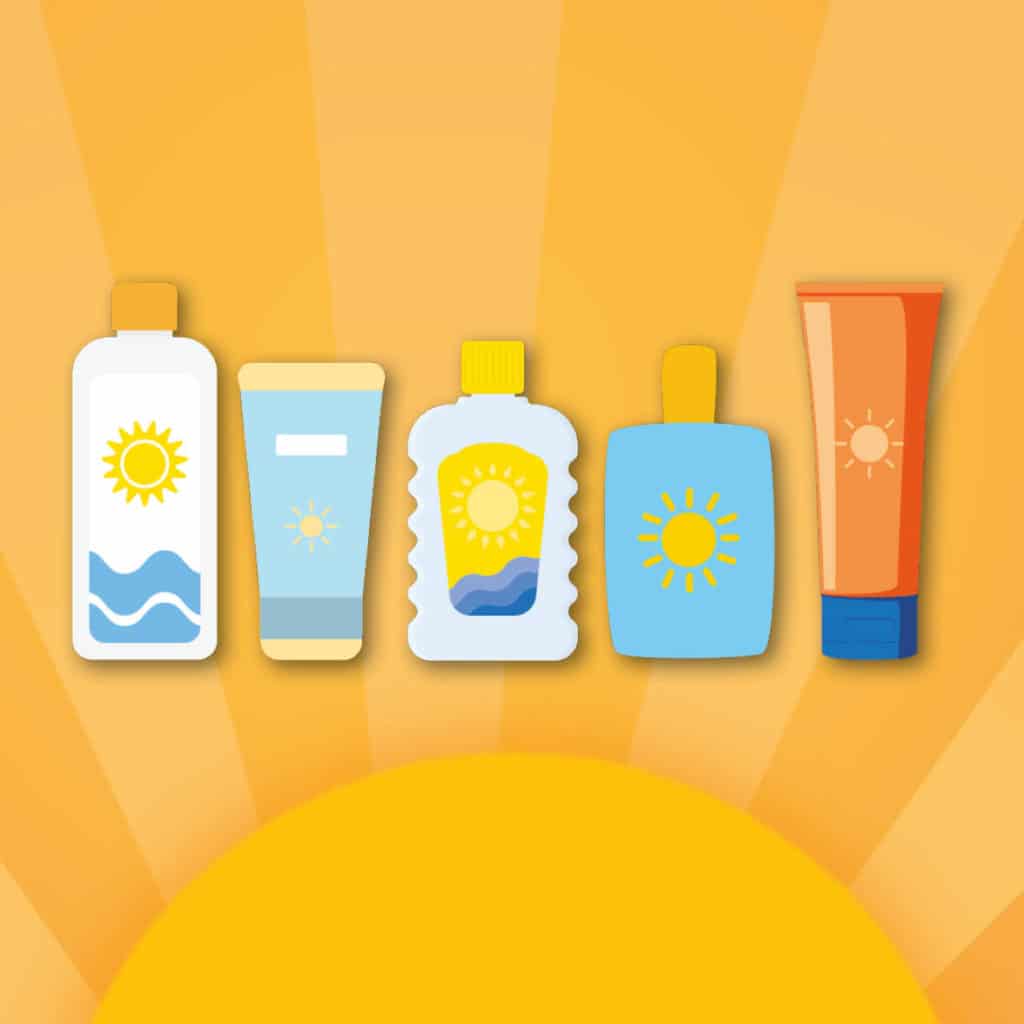Summer is here! (Although it may not feel like it a lot of the time…!) And tomorrow is the summer soltice! So in honour of this we’re talking all about sunscreen in this week’s blog.
Even on a cloudy day we need to be careful because it’s still possible for skin to burn and babies and children’s skin is much more sensitive than an adult’s and must be protected when they’re outdoors between March and October in the UK.
On this week’s blog we’re look at what to look for in a sun cream and how best to avoid sun damage over the summer months. We’ll also give you recommendations for sun creams for children with sensitive skin and eczema.

Sun safety tips
Teach your children that there’s no safe or healthy way to get a tan. A tan does not protect your skin from the sun’s harmful effects. It’s important to strike a balance between protecting yourself from the sun and getting enough vitamin D from sunlight.
Spend time in the shade when the sun is strongest. In the UK, this is between 11am and 3pm from March to October.
Make sure you:
- get your child into the shade between 11am and 3pm
- never let your child burn
- cover your child with suitable clothing and sunglasses
- use at least factor 30 sunscreen but ideally use factor 50 on children
Buying sunscreen
Do not rely on sunscreen alone to protect your child from the sun. Dress them in suitable clothing and make sure they stay in the shade when the sun’s at its hottest.
When buying sunscreen, the label should have:
- a sun protection factor (SPF) of at least 30 to protect against UVB
- at least 4-star UVA protection
UVA protection can also be indicated by the letters “UVA” in a circle, which indicates that it meets the EU standard.
Make sure the sunscreen is not past its expiry date.
What are the SPF and star rating?
The sun protection factor, or SPF, is a measure of the amount of ultraviolet B radiation (UVB) protection.
SPFs are rated on a scale of 2 to 50+ based on the level of protection they offer, with 50+ offering the strongest form of UVB protection.
The star rating measures the amount of ultraviolet A radiation (UVA) protection. You should see a star rating of up to 5 stars on UK sunscreens. The higher the star rating, the better.
The letters “UVA” inside a circle is a European marking. This means the UVA protection is at least a third of the SPF value and meets EU recommendations.
Sunscreens that offer both UVA and UVB protection are sometimes called broad spectrum.
How to apply sunscreen
If sunscreen is applied too thinly, the amount of protection it gives is reduced.
If you plan to be out in the sun long enough to risk burning, sunscreen needs to be applied twice:
- 30 minutes before going out
- just before going out
Sunscreen should be applied to all exposed skin, including the face, neck and ears, and head if you have thinning or no hair, but a hat will give better protection.
Sunscreen needs to be reapplied liberally and frequently, and according to the manufacturer’s instructions.
Even if your sunscreen is ‘water resistant’ it still needs to be applied if your child has been swimming.
This includes applying it straight after you have been in water, even if it’s “water resistant”, and after towel drying, sweating or when it may have rubbed off.
It’s also recommended to reapply sunscreen every 2 hours, as the sun can dry it off your skin.
Swimming and sunscreen
Water washes sunscreen off, and the cooling effect of the water can make you think you’re not getting burned. Water also reflects ultraviolet (UV) rays, increasing your exposure.
Sunscreen should be reapplied straight after you have been in water, even if it’s “water resistant”, and after towel drying, sweating or when it may have rubbed off.
Sunscreen and eczema
The National Eczema Society doesn’t recommend one single sun screen as what works for one person’s skin may not suit another’s but the brands they recommend are below.
The following are unfragranced, mineral-based sunsreens:
- Heliocare Mineral Tolerance Fluid SPF50
- Isdin Fotoprotector Pediatrics Fusion Fluid Mineral Baby SPF50
- SunSense Sensitive SPF50+
The following brands are examples of mineral and chemical filters:
- Altruist SPF30, SPF50
- La Roche-Posay Anthelios Dermo-Pediatrics Lotion SPF50+
- Uvistat SPF30, SPF50
There are other similar brands available.
